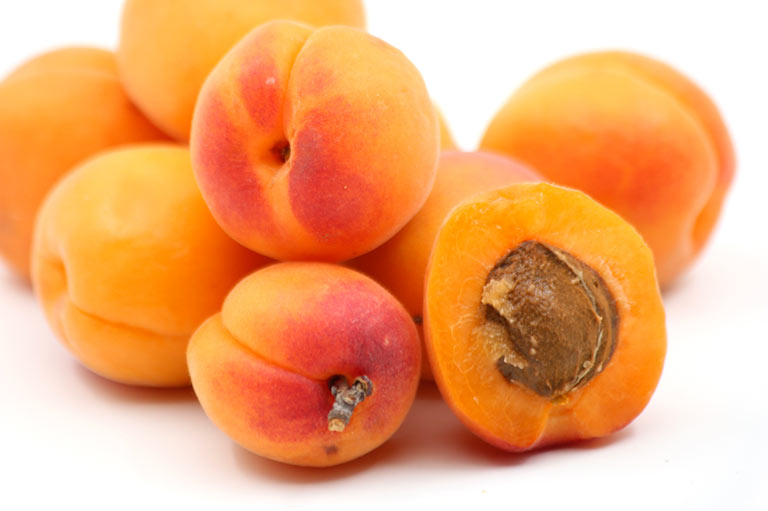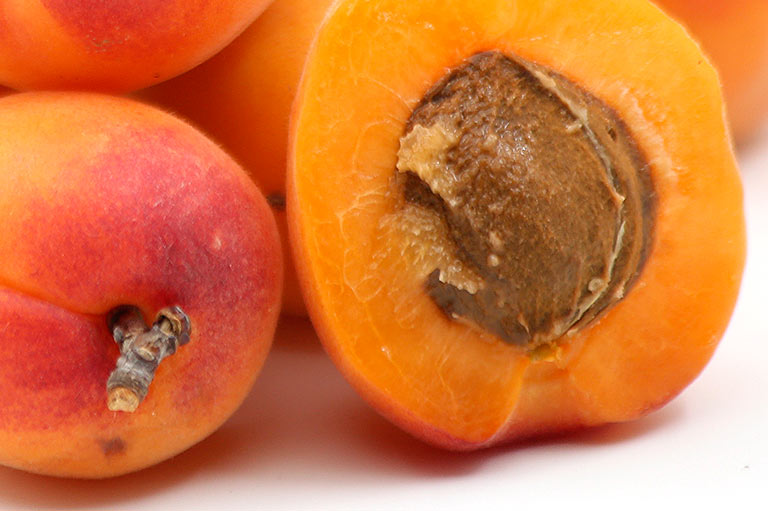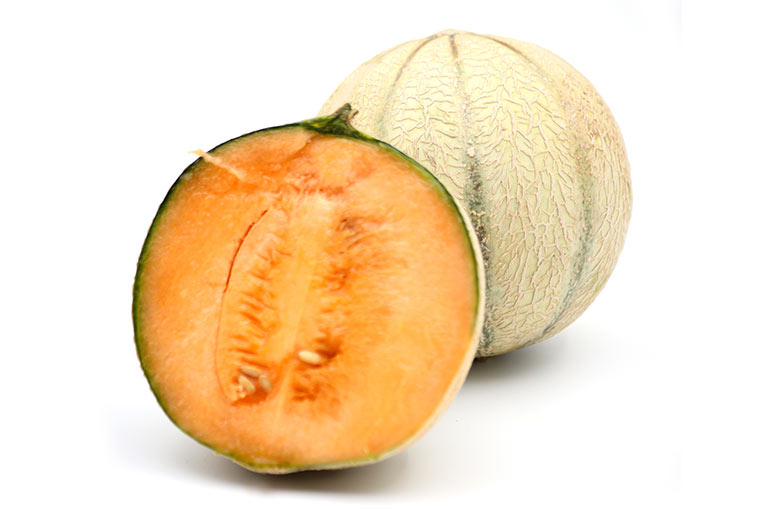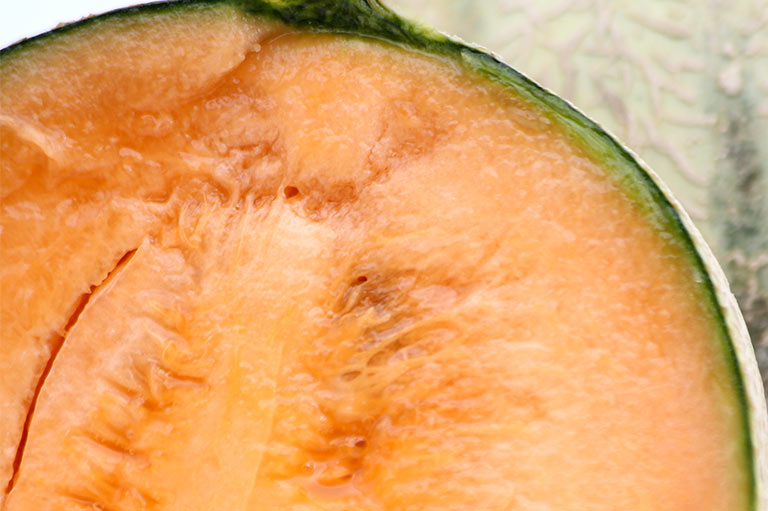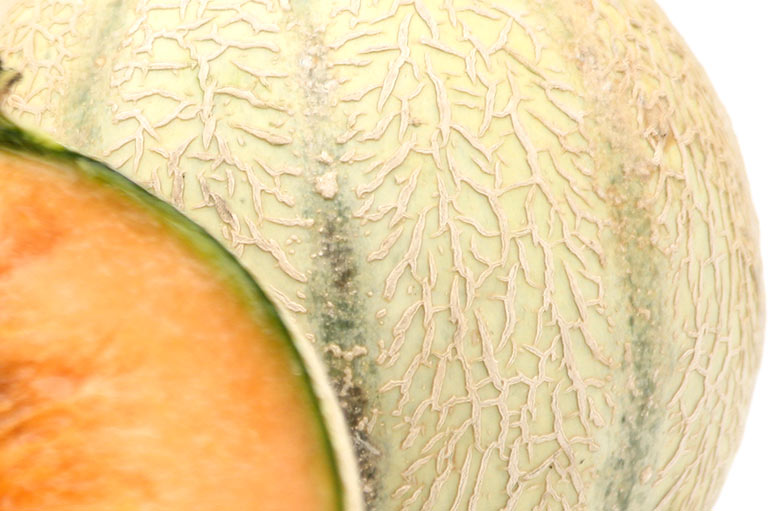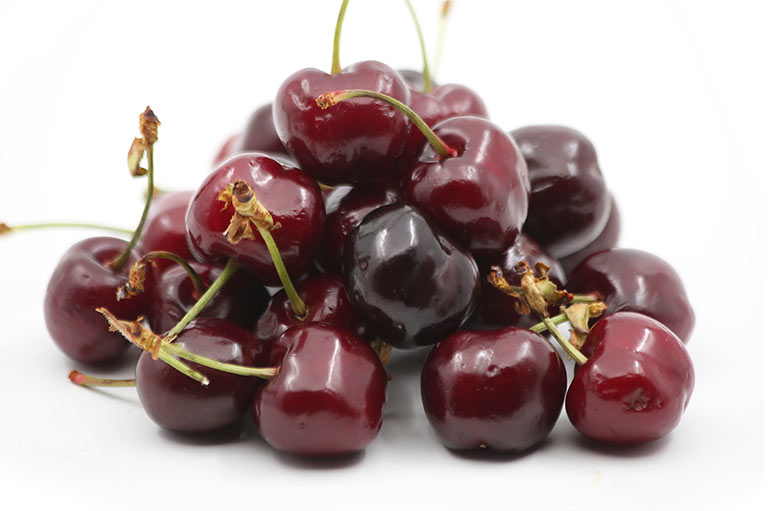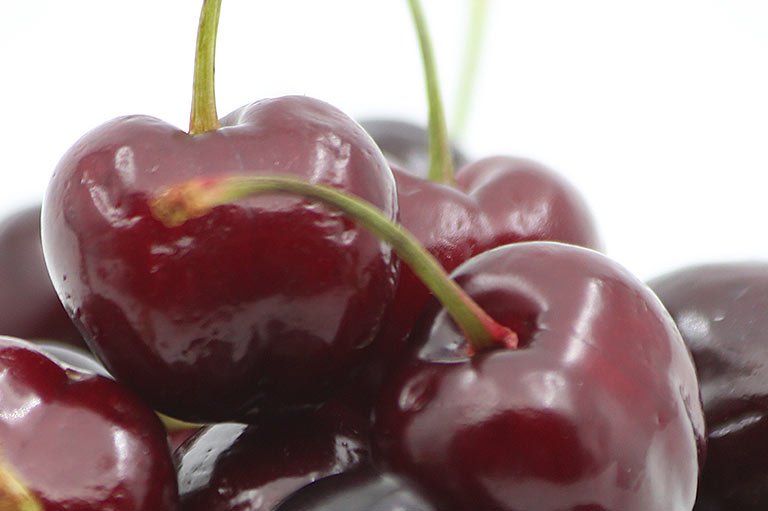June
It is the beginning of summer! The leaves on the trees are full and green, our summer fruit has arrived and the fields are packed with cherries, apricots and the first melons of the year.
It is a time of celebration, as villages hold their summer festivals, and also a time of change. The birds will crack open their shells, enter the world and learn to fly, and from the Night of San Juan onwards the days will shorten. The real summer heat will arrive, and with it the fruits we most associate with this time of year: flat peaches, nectarines and plums…
Apricots
Available May – June
Apricots originated in China, and were first cultivated there around 4,000 years ago. The tree and its fruit carry many practical and poetic associations, across cultures: in China the apricot symbolises education and has been connected to the practice of medicine for thousands of years; the short growing season of the tree gave rise to the Arabic expression filmishmish (“in apricot season”), used to comment on things that are hasty or unlikely to actually happen.
Apricots are a versatile ingredient in the kitchen; they can be eaten raw, dried or roasted, preserved in syrup or stored as a jam. And the oils obtained from the kernel inside the stone are used in the production of skincare products, face masks, soaps and essential oils.
The humble apricot is a great source of nutrition, being packed with vitamins, fibre and antioxidants. It also contains high levels of zinc, a mineral that’s essential for cognitive development and can help improve mental focus. Eating just a few delicious apricots stimulates the brain and helps it create new neurons, making them an ideal snack for students – or anyone looking to sharpen their mind!
Cantaloupe Melon
Available May – September
The cantaloupe melon is a creeping annual plant that produces round or oval fruit, 10-15 cm in diameter and with a rough, net-like outer skin. It was probably first cultivated in the hot, dry savannah regions of Africa and southwest Asia; Egyptian, Chinese and Greek art show cantaloupes being grown and eaten as early as 3,000 BC. Cantaloupe seeds are a high-quality source of vegetable oil, which can also be used as an ingredient in perfumes and cosmetics.
The health benefits of the cantaloupe are many: due to its diuretic properties it helps purify the body and improve the functioning of the kidneys, being mildly acidic it neutralises acidity in the stomach, and it can help strengthen the immune system, reduce the effects of cholesterol and guard against heart disease. However, because melon ferments rapidly in the stomach – which can cause digestive problems – it is recommended to eat it earlier in the day, by itself or at the start of a meal.
Cantaloupe can be used in a variety of recipes, and not just as a dessert. Its pleasant taste and smooth texture make it ideal for adding a sweet taste to dishes, like the tradition of serving melon with ham. It can also be used in ice creams, smoothies and salads. Combine melon with a few different types of lettuce, avocado, pepper, pineapple, watermelon and cucumber; healthy, tasty and very colourful!
Cherries
Available May – June
We have been eating cherries since prehistoric times, with evidence of their consumption dating back to 4000-5000 BC. The Greeks were the first to cultivate the tree, but the word cherry actually originates in Latin: cerasum refers to Kerasous, the name given by the Romans to the town in northeastern Anatolia where general Lucius Licinius Lucullus encountered the fruit. He brought a sample to Rome in 72 BC, and that began its popular spread across Europe.
Most varieties of cherry have the same appearance; a deep red colour, juicy flesh and a small stone inside. But as far as taste goes there are big differences. Some are sweet (like the picota, which is shaped with a slight peak at the end and naturally separates from the stalk when picked), and others sour (the guinda is a type of wild cherry that is often ‘candied’, cooked in water and sugar until the moisture in the cherry has been replaced by syrup).
A generous handful of cherries weighs a little over 50 grams, includes around 5.5 grams of sugar and contains less than 30 calories, making them an ideal choice for a mid-morning snack. They also have one of the lowest glycaemic indexes of any fruit, so taken in moderation they can be a useful option for people with diabetes. What’s even better are the numbers of antioxidants a cherry contains, helping the body to combat inflammation, repair cell damage and support cardiovascular health.
